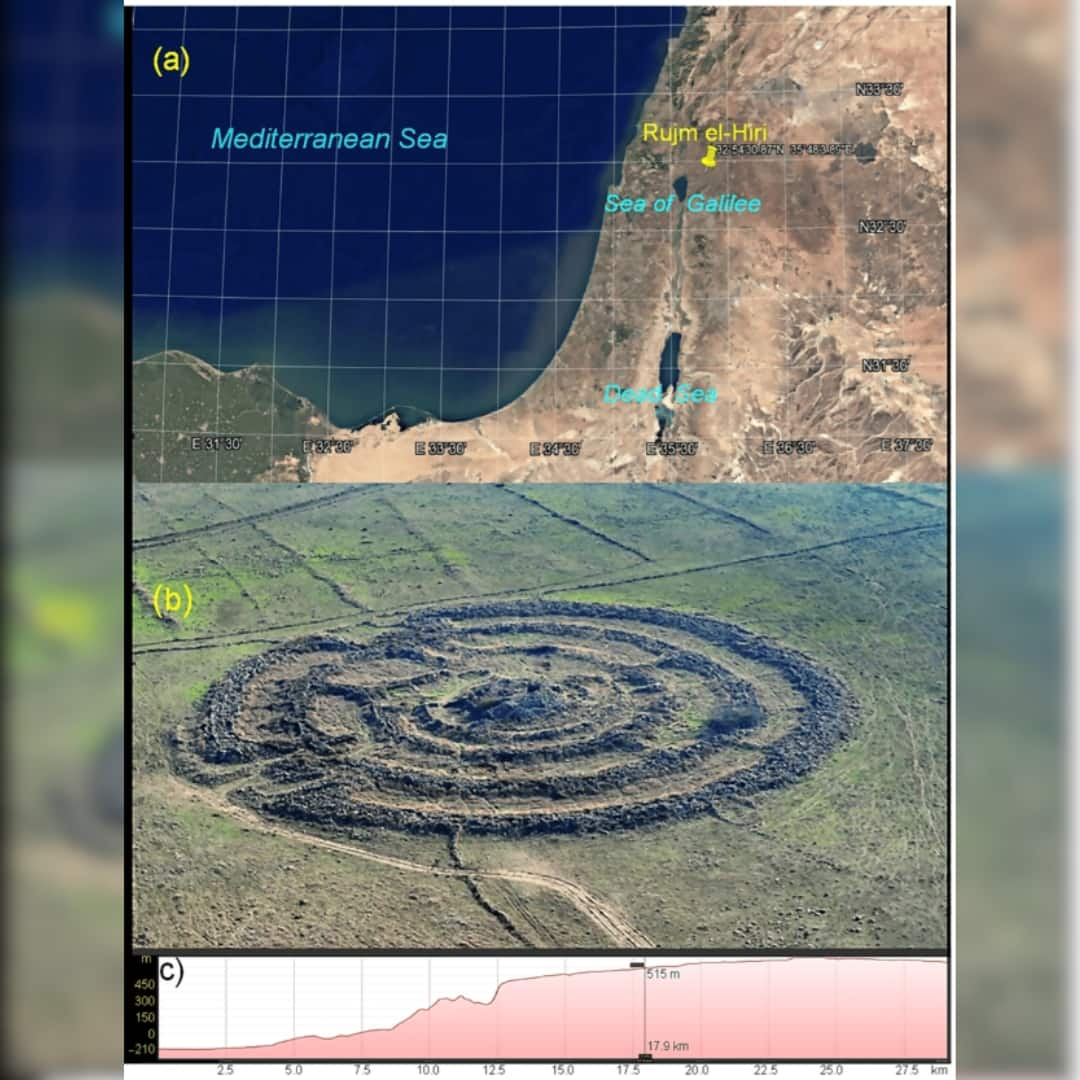



The ancient site of Rujm el-Hiri, also called the “Wheel of Ghosts,” has intrigued historians for centuries. Once thought to be an astronomical observatory, new research challenges this belief, deepening the mystery surrounding its purpose and origins.
Researchers Uncover Shifting Alignments
A study by Tel Aviv University and Ben-Gurion University of the Negev reveals that Rujm el-Hiri's position has shifted over millennia. Using geomagnetic analysis and tectonic reconstruction, scientists found that the structure has rotated counterclockwise and moved by tens of metres. This movement means its alignment with celestial bodies, once considered intentional, may have occurred by chance.
 (a) Geographic location of Rujm el-Hiri; (b) Aerial perspective; (c) Distance-altitude profile of the surrounding region relative to the northernmost point of the Sea of Galilee (vertical axis: altitude above/below sea level in miles; horizontal axis: distance in kilometres). The vertical line marks Rujm el-Hiri's position. (Image: Khabarova et al., Remote Sensing, 2024/Freikman & Porat, J. Inst. Archaeol. Tel Aviv Univ., 2017)
(a) Geographic location of Rujm el-Hiri; (b) Aerial perspective; (c) Distance-altitude profile of the surrounding region relative to the northernmost point of the Sea of Galilee (vertical axis: altitude above/below sea level in miles; horizontal axis: distance in kilometres). The vertical line marks Rujm el-Hiri's position. (Image: Khabarova et al., Remote Sensing, 2024/Freikman & Porat, J. Inst. Archaeol. Tel Aviv Univ., 2017)
The site, built as early as 4500 BCE, underwent modifications until the Bronze Age. It features a central cairn surrounded by concentric basalt circles, spanning 150 metres. Surrounding structures, including burial mounds and walls, suggest additional purposes, possibly as a fort or communal space.
Unique Techniques Reveal Complex History
This study marks the first use of combined scientific techniques in the Southern Levant. Satellite imagery, geomagnetic readings, and GPS mapping offered insights into how the region’s tectonic activity altered the site's layout over time.
Researchers also noted evidence of reuse, with walls and features added long after the initial construction. "Rujm el-Hiri is an example of continuous reshaping," the study states, reflecting layers of historical adaptation.
Read Also: MIT astronomers finally discover the original source of an alien signal that hit Earth in 2022
The findings could guide similar studies of megalithic structures worldwide. The team suggests using artificial intelligence to identify ancient sites from satellite imagery, even if hidden by terrain.
Published in Remote Sensing, the research sheds light on the evolving purpose of Rujm el-Hiri. It highlights the potential for advanced techniques to reveal new insights into ancient civilisations.
Discover the latest Business News, Sensex, and Nifty updates. Obtain Personal Finance insights, tax queries, and expert opinions on Moneycontrol or download the Moneycontrol App to stay updated!
Find the best of Al News in one place, specially curated for you every weekend.
Stay on top of the latest tech trends and biggest startup news.